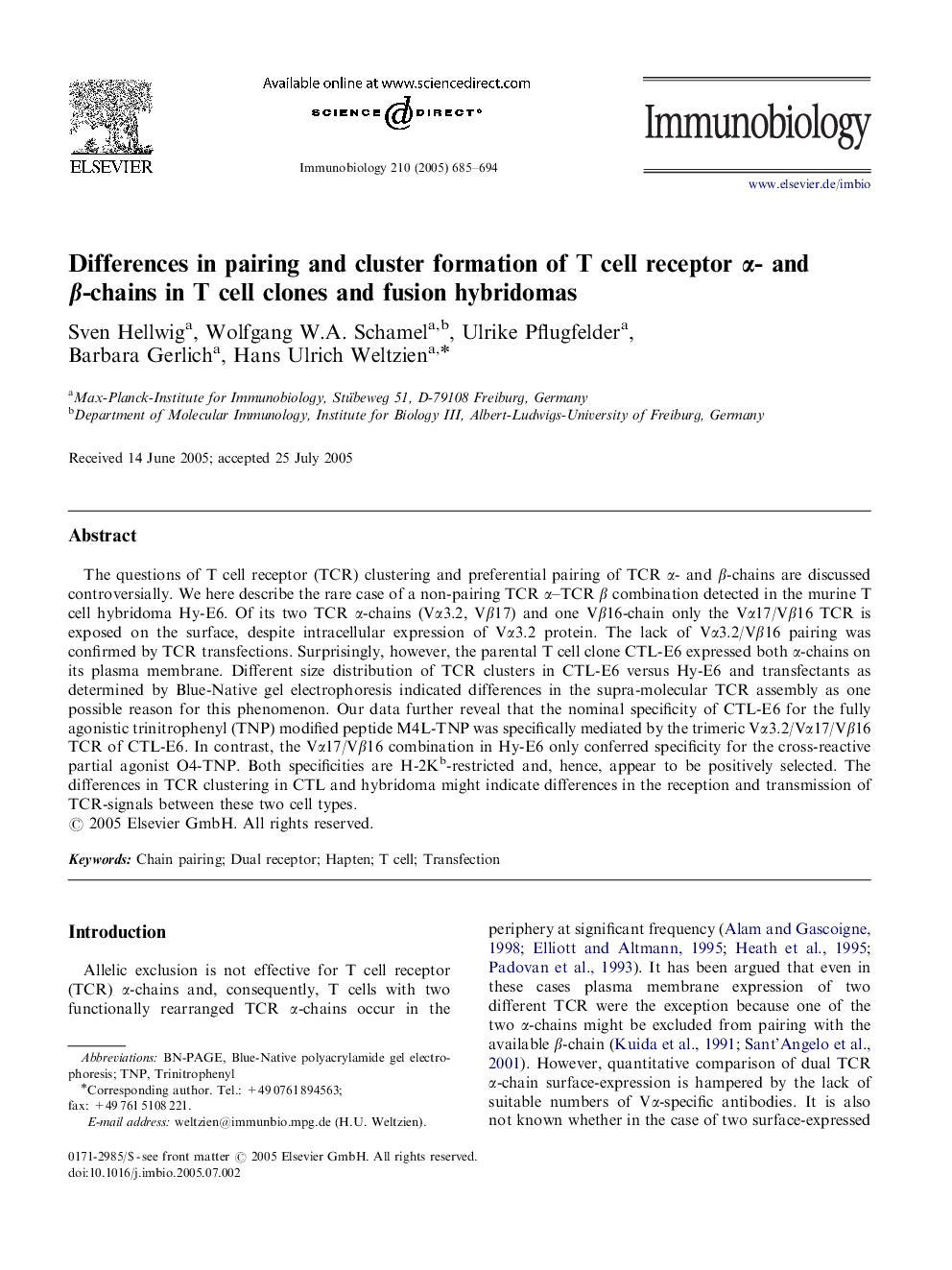| Article ID | Journal | Published Year | Pages | File Type |
|---|---|---|---|---|
| 10941279 | Immunobiology | 2005 | 10 Pages |
Abstract
The questions of T cell receptor (TCR) clustering and preferential pairing of TCR α- and β-chains are discussed controversially. We here describe the rare case of a non-pairing TCR α-TCR β combination detected in the murine T cell hybridoma Hy-E6. Of its two TCR α-chains (Vα3.2, Vβ17) and one Vβ16-chain only the Vα17/Vβ16 TCR is exposed on the surface, despite intracellular expression of Vα3.2 protein. The lack of Vα3.2/Vβ16 pairing was confirmed by TCR transfections. Surprisingly, however, the parental T cell clone CTL-E6 expressed both α-chains on its plasma membrane. Different size distribution of TCR clusters in CTL-E6 versus Hy-E6 and transfectants as determined by Blue-Native gel electrophoresis indicated differences in the supra-molecular TCR assembly as one possible reason for this phenomenon. Our data further reveal that the nominal specificity of CTL-E6 for the fully agonistic trinitrophenyl (TNP) modified peptide M4L-TNP was specifically mediated by the trimeric Vα3.2/Vα17/Vβ16 TCR of CTL-E6. In contrast, the Vα17/Vβ16 combination in Hy-E6 only conferred specificity for the cross-reactive partial agonist O4-TNP. Both specificities are H-2Kb-restricted and, hence, appear to be positively selected. The differences in TCR clustering in CTL and hybridoma might indicate differences in the reception and transmission of TCR-signals between these two cell types.
Keywords
Related Topics
Life Sciences
Biochemistry, Genetics and Molecular Biology
Cell Biology
Authors
Sven Hellwig, Wolfgang W.A. Schamel, Ulrike Pflugfelder, Barbara Gerlich, Hans Ulrich Weltzien,
